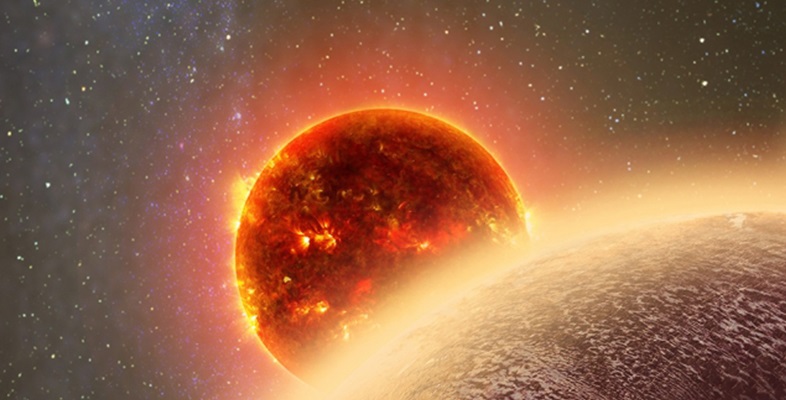6.2 Close-in planets are hot, hot, hot!
Before 51 Pegasi b was discovered, we had no idea that hot Jupiters existed. In our Solar System, we’re used to small rocky planets being close to the Sun, and large, gas giant planets inhabiting the much colder regions further out. It was generally assumed that extrasolar systems would form in a similar way to our Solar System and so would be structured similarly. This idea was completely turned on its head when the first exoplanets, including HD 209458 b, were discovered.
Because these planets are very close to their stars, they are incredibly hot. Temperatures on a more recently discovered hot Jupiter, KELT-9 b, are expected to reach 4300 °C – that’s hotter than the surface of many stars!
Astronomers use a different measure of temperature than degrees Celsius, °C. Instead, they measure temperature in kelvin, or K. A temperature difference of 1 K is exactly the same as a difference of 1 °C, but the starting point of the temperature scale is different. 0 °C is the freezing point of water, equivalent to 273 K. 0 K is absolute zero – the coldest anything could possibly be according to the laws of physics. This temperature scale will be used in interactive applications shortly.
Mathematically, we can convert between these two temperature scales easily: simply add 273 to a temperature expressed in °C to express it in kelvin. Alternatively, subtract 273 from a temperature expressed in kelvin to obtain the corresponding value in °C.
